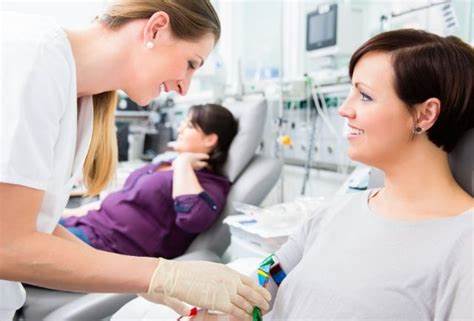The Essential Education and Training for a Phlebotomist
Are you considering a career as a phlebotomist?
This guide will take you through the educational and training requirements for this vital healthcare profession.
Introduction
Phlebotomists play a crucial role in the healthcare system, as they are responsible for drawing blood from patients for various medical purposes.
To excel in this field, you need to meet specific educational and training prerequisites.
High School Diploma or Equivalent
Your journey towards becoming a phlebotomist typically starts in high school.
The first step is to ensure you have a high school diploma or an equivalent credential.
A strong foundation in science and biology courses can be particularly beneficial, as it will give you a head start in understanding the intricacies of human anatomy and physiology.
Phlebotomy Training Program
After completing high school, aspiring phlebotomists must enroll in a phlebotomy training program.
These programs are often offered by vocational schools, community colleges, or medical institutions.
The coursework typically covers the following areas:
1. Anatomy and Physiology
A comprehensive understanding of the human body is essential for a phlebotomist.
You’ll learn about the circulatory system, veins, arteries, and how blood circulation works.
2. Blood Collection Techniques
Phlebotomy programs will teach you the various methods and techniques for drawing blood safely and efficiently.
This includes venipuncture and capillary puncture procedures.
3. Infection Control
Maintaining a sterile environment and preventing the spread of infections is paramount in phlebotomy.
You’ll be educated on infection control practices to ensure patient safety.
4. Medical Terminology
Proficiency in medical terminology is crucial for accurate record-keeping and communication with other healthcare professionals.
5. Hands-On Practice
Hands-on training is a significant component of phlebotomy programs. You’ll have the opportunity to practice blood collection techniques under supervision.
Certification
While certification requirements may vary by state, obtaining certification is highly recommended.
One of the most recognized certifying bodies for phlebotomists is the American Society for Clinical Pathology (ASCP).
To become certified, you’ll need to pass an exam that demonstrates your knowledge and competence in phlebotomy.
Continuing Education
The field of healthcare is constantly evolving, and phlebotomists must stay updated with the latest techniques and best practices.
Consider participating in continuing education courses and workshops to enhance your skills and knowledge.
Conclusion
In summary, becoming a proficient phlebotomist requires a combination of education and training.
Start by earning a high school diploma and then enroll in a phlebotomy training program.
Gain hands-on experience and consider pursuing certification to boost your career prospects.
Remember that education and learning are ongoing processes in the ever-evolving field of healthcare.
Good luck on your journey to becoming a skilled phlebotomist!








